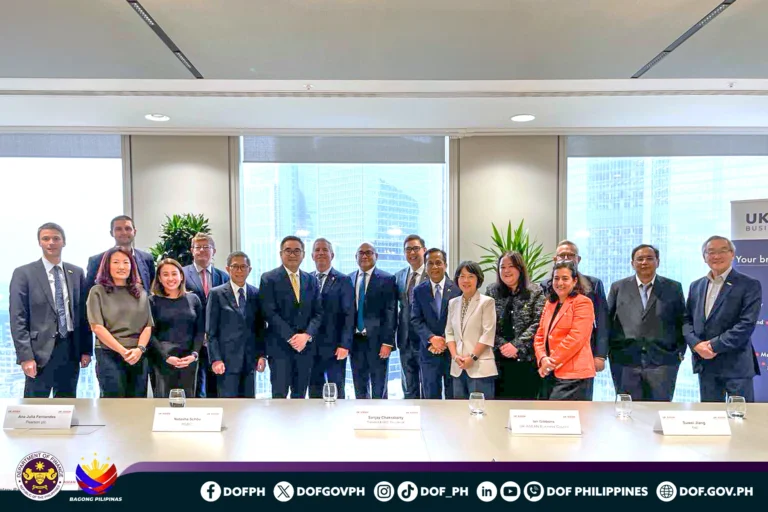Finance Secretary Carlos Dominguez III said projects undertaken together by the public and the private sectors should avoid unwarranted delays and spare taxpayers the heavy burden of contingent liabilities supposed to be shouldered by the government, to ensure that these ventures turn out to be “Public-Private Partnerships for the People (PPPP).”
Dominguez informed prospective foreign investors at a recent international forum that while the Duterte administration welcomes Public-Private Partnership (PPP) projects to help finance its big-ticket infrastructure projects, these should fulfill the two conditions he cited so the ventures would truly benefit Filipinos.
“We have taken the attitude that the PPP is insufficient, it should not be Public-Private Partnership. It should be PPPP—Public Private Partnership for the People–that the infrastructure projects must be delivered quickly and we cannot take too much time negotiating with the private sector on this,” Dominguez said during an open forum on national and regional cooperation at the International Finance Forum (IFC) held recently in Guangzhou, China.
He added: “The second issue that we have seen on our PPPs again—I don’t know if it’s true with other countries—not enough attention in the past has been paid to the contingent liabilities on the government that these PPP contracts involve in, and because of that we have taken a very serious position that we will limit severely the contingent liabilities on the government, and really the taxpayers, with regards to PPP projects.”
Dominguez’s statements were in response to Mr. Ding Huamei, the chairman and president of Tianjin Financial Assets Exchange, who suggested during the open forum that the PPP mode be explored by China and the member-states of the Association of Southeast Asian Nations (ASEAN) in cooperating on the implementation of infrastructure projects in the region.
Tianjin Financial Assets Exchange is China’s first national assets trading platform for PPP projects.
The PPP was a priority program of the former Aquino administration.
Dominguez said he would like to learn from the ideas and practices of Tianjin on how to deal with the two conditions that the Duterte administration has set for its PPPP projects.
He recalled that in the past, the time between the submission of a PPP proposal to the start of the project implementation took around 33 months on average, while one project with competing private sector proponents took 60 months.
From an initial list of 75 flagship projects, the Duterte administration’s “Build, Build, Build” infrastructure modernization program now involves 100 projects.
The 100 flagship projects cover five categories, with Transport and Mobility as the top priority, according to a statement released earlier by Presidential Adviser on Flagship Programs and Projects Vivencio Dizon. The other four are Power, Water, Information and Communications Technology, and Urban Development and Renewal.
Included in the list are the Metro Manila Subway Project, North South Commuter Railway, Clark International Airport Expansion Project, Cebu Monorail System, Panay-Guimaras Negros Bridge, Samal Island-Davao City Connector Bridge, and the Mindanao Rail Project, said Dizon, who is also president-CEO of the Bases Conversion and Development Authority (BCDA).
Most of these flagship projects are either ongoing, due to commence next year or are expected to be finished or in advance stages of feasibility studies or completion by the time President Duterte leaves office in 2022.
Earlier, Finance Assistant Secretary Antonio Lambino II said the level of infrastructure investments the government has put thus far into “Build, Build, Build” is “historically unprecedented, highly sustainable and fiscally responsible, and supports our overarching goal of accelerating poverty reduction.”
He said the government spent P889 billion on infrastructure modernization in 2018 alone.
Lambino pointed out that aside from the flagship projects, “Build, Build, Build” also includes tens of thousands of relatively smaller public works across the country ranging from roads, airports and seaports to classrooms, evacuation centers and flood control works.
Citing a recent report by Public Works Secretary Mark Villar, Lambino said a total of 9,845 kilometers (km) of roads, 2,709 bridges, 4,536 flood control projects, 82 evacuation centers and 71,803 classrooms have already been completed under “Build, Build, Build” since June 2016.
The Department of Transportation (DOTr) and its attached agencies have completed 64 airport projects under the Duterte administration, with 133 more ongoing.
There are six railway projects being constructed and one undergoing rehabilitation. 243 commercial and social or tourism seaport projects have been completed, while 136 are ongoing.
-oOo-





